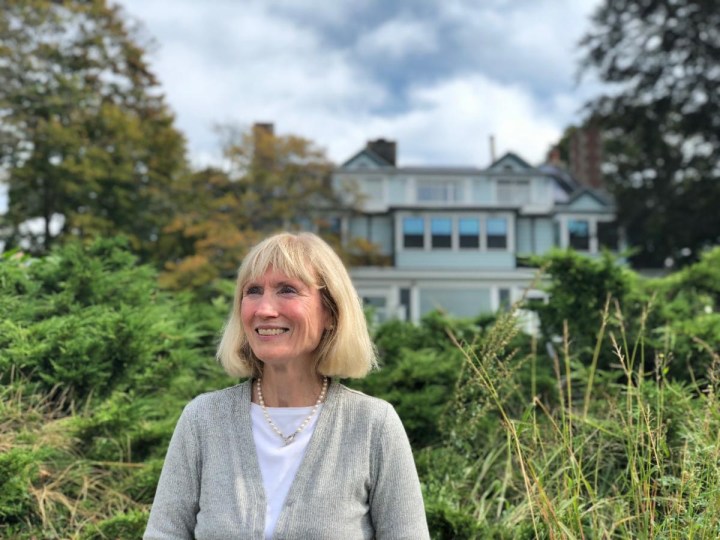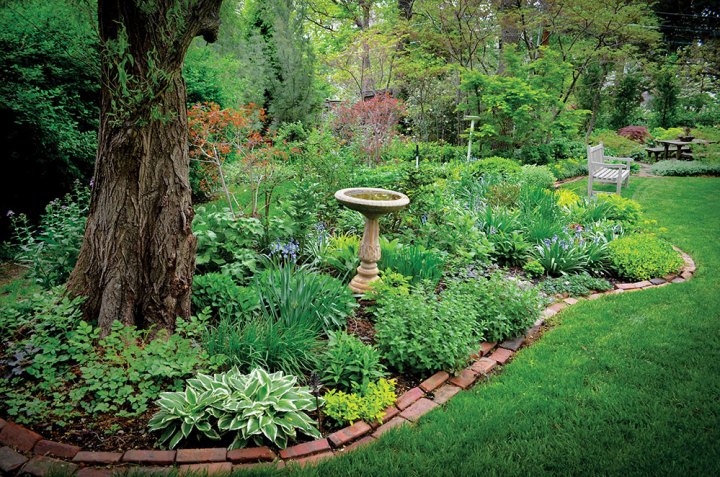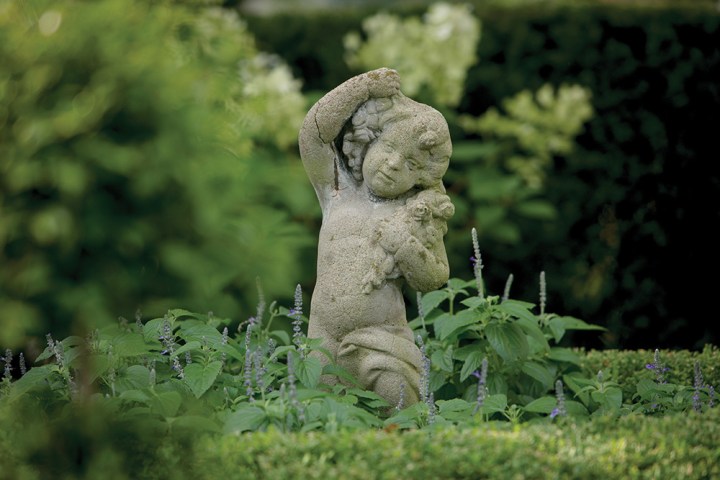The Westport Garden Club’s first project, re-landscaping the Westport Triangle (WGC Archives)
A new book chronicles the history of The Westport Garden Club
It is astonishing to learn just how many local landscapes bear the fingerprints of The Westport Garden Club, which celebrates its 75th birthday this year.
 “Sharing the Love of Gardening: The History of The Westport Garden Club” (University of Missouri Press)
“Sharing the Love of Gardening: The History of The Westport Garden Club” (University of Missouri Press)
The celebration includes the release of a new book, “Sharing the Love of Gardening: The History of The Westport Garden Club,” by club member Kristie C. Wolferman, whose numerous books include the recent “The Nelson-Atkins Museum of Art: A History.”
Against the backdrop of Kansas City history, Wolferman deftly guides the reader through the club’s conception and birth and the myriad projects its garden-obsessed, hardworking and dedicated members have conceived and executed.
 Kristie C. Wolferman (photo by Stuart Wolferman)
Kristie C. Wolferman (photo by Stuart Wolferman)
The book’s glorious photography, much of it by another club member, Marianne Kilroy, reinforces the fact that Kansas City has benefited immensely from the many efforts of The Westport Garden Club.
The idea to launch the club was proposed by Elizabeth Abernathy Hull, a devoted gardener who lived in Ridgefield, Connecticut, but had grown up in Kansas City. During a visit from her childhood friend Mason Thompson and his wife, Helen Hayes Thompson, Hull expressed her disappointment that her former hometown lacked a Garden Club of America-affiliated organization for garden lovers.
Hull encouraged Helen Thompson to create a garden club in Kansas City like the one in Ridgefield that Hull had joined. The Ridgefield Garden Club enjoyed the distinction of membership in the national Garden Club of America, which meant that the Connecticut group did not focus strictly on gardening or flower arranging — conservation, horticulture and civic involvement were equally important.
Founded in 1913, The (national) Garden Club of America’s stated mission was “to restore, improve, and protect the quality of the environment through educational programs and action in the fields of conservation and civic improvement.” Their focus on preservation was especially evident in the 1930s, when they purchased thousands of acres in northern California to save the largest contiguous old-growth redwood forest there.
In 1950, the greater Kansas City area was already home to 42 garden groups; an alliance with The Garden Club of America would not only distinguish The Westport Garden Club from the multitudes but would enormously enhance their outreach and impact. As Wolferman recounts, Hull advised Thompson that before the Kansas City group could apply, Thompson would have to organize 50 women “to work together for five years for civic projects and to improve their own gardens, too.”
Wolferman chronicles the early days of the club: Some of their inaugural projects included creating flower arrangements for The Nelson-Atkins Museum of Art, as well as renovating and landscaping the Westport Triangle and Quality Hill. After the major damage from the 1951 flood, WGC members noticed how many trees were suffering and protested that the city was employing unlicensed crews to treat and trim them. Their objections inspired legislation to be passed requiring that tree men employed by the city be properly trained.
 View of Margaret Weatherley Hall’s garden (photo by Marianne Kilroy)
View of Margaret Weatherley Hall’s garden (photo by Marianne Kilroy)
 View of Carolyn Steele Kroh’s garden (photo by Marianne Kilroy)
View of Carolyn Steele Kroh’s garden (photo by Marianne Kilroy)
One rather ambitious project began after some of the members learned about the horticultural therapy offered at the Menninger Clinic in Topeka, utilizing plants and plant-related activities to help promote physical
and mental well-being. The WGC was able to create a similar program for Saint Luke’s Hospital’s Crittenden Children’s Center.
Wolferman’s account of the club’s more recent history includes its creation in 2016 of a garden within Loose Park to help conserve monarch butterflies and other pollinators. The area highlights native plants, essential to the insects’ support. Azaleas, the focus of another Loose Park garden, established in 1965, is currently being renovated by the WGC with help from a local Boy Scout troop. “We just planted 130 new azaleas, and it’s going to be glorious this coming spring,” Wolferman said.
 View of Helen Lea’s garden (photo by Marianne Kilroy)
View of Helen Lea’s garden (photo by Marianne Kilroy)
Inspired by a lecture by Doug Ladd, the WGC introduced the Native Plant Initiative in 2014 (now known as Deep Roots), which has been an enormously popular project. Learning about, planting and conserving local plants, which are more resilient and require less water, is a particularly relevant topic these days. The club’s modus operandi has been to initiate projects and to turn them over to community partners for maintenance once they are up and running. Deep Roots currently has 70 partners working with them to increase native plant landscapes.
The Beanstalk Children’s Garden in Swope Park’s Kansas City Community Garden is a favorite of Wolferman’s. The Beanstalk offers children a chance to smell, touch and taste live plants; their involvement can even help them earn Scout badges. The Beanstalk Garden is divided into sections featuring vegetables, seeds, herbs, fruits and a curiosity garden, as well as a water garden.
“Being a member of The Westport Garden Club has made me realize that one person as a member of a dedicated group of gardeners and environmentalists can do something to improve the world.” Wolferman said. “‘Sharing the Love of Gardening’ is not just about gardening and enjoying nature but about learning how to take care of the earth and to be personally responsible for doing one’s part to make the world a better place.”
For more information, thewestportgardenclub.org.
Like this:
Like Loading…


Comments are closed.